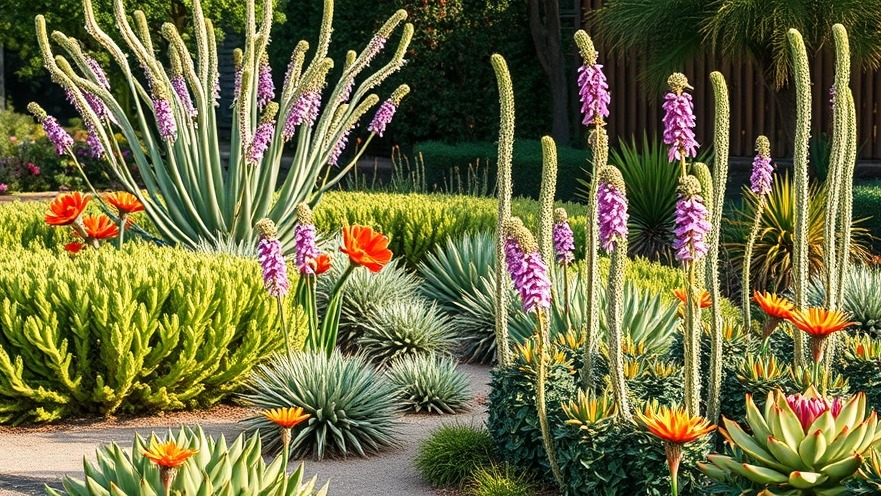
Embracing Native Plants: A New Gardening Era
As homeowners and eco-conscious individuals increasingly seek sustainable solutions for their outdoor spaces, the importance of incorporating native plants into landscaping cannot be overstated. Andrea DeLong-Amaya, a leading expert in Texas native plants, is set to present at the upcoming 'Garden Spark!' event on September 11, offering invaluable insights into the sustainable home design revolution through eco-friendly gardening. With her new book, The Texas Native Plant Primer, she aims to guide attendees in transforming perceptions about native plants, showcasing their potential to enhance both beauty and biodiversity in our gardens.
Why Native Plants Matter
Native plants are not only aesthetically pleasing; they play a critical role in local ecosystems. By choosing regionally adapted species, gardeners can create self-sustaining landscapes that require less water, fertilizer, and pesticide, aligning perfectly with principles of energy efficiency and resource conservation. This paradigm shift in landscaping recognizes that native plants offer ecological power while beautifully framing homes.
Transforming Perceptions: From Weeds to Wonders
Despite their many benefits, native plants have often been misunderstood, regarded by some as messy or weedy. Andrea's mission during her talk is to dispel these myths, educating attendees on how to stylishly integrate these plants into a variety of garden styles—from wildflower patches to sophisticated formal gardens. She will provide practical tips for creating stunning landscapes that embrace the natural beauty of Texas flora while contributing positively to the environment.
Tips for Creating a Sustainable Garden
Whether you're a novice gardener or a seasoned green thumb, Andrea's techniques can help you cultivate a garden that’s not only eye-catching but also eco-friendly. Here are some actionable tips to keep in mind:
Choose Native Species: Selecting plants like the Mexican Feather Grass and Bluebonnets, which thrive in Texas’ climate, can enhance garden resilience.
Implement Water Conservation Techniques: Utilizing rain barrels and drip irrigation methods will minimize water use.
Focus on Compartmentalization: Design your garden in zones that cater to different types of plants based on their sun and shade needs, optimizing growth and reducing maintenance.
Networking and Community Engagement
Events like Garden Spark not only offer learning opportunities but also foster connections among participants sharing a common vision for sustainable living. Attendees can engage in discussions, ask questions, and draw inspiration from Andrea’s extensive experience as the horticulture director at the Lady Bird Johnson Wildflower Center, where community and conservation efforts are a central focus.
Future Trends in Eco-Friendly Gardening
The increasing awareness and appreciation for biodiversity are expected to further influence landscaping trends. With climate change and urban expansion threatening native ecosystems, there’s a growing call for sustainable landscaping solutions. By incorporating native plants into your outdoor design, you’re not just beautifying your property; you're also contributing to habitat conservation and promoting overall biodiversity in your area.
Andrea DeLong-Amaya's upcoming presentation is a must-attend for anyone interested in eco-friendly gardening. Gain insight into practical gardening methods that honor Texas's unique botanical heritage and advocate for healthier landscapes in the process. Mark your calendars for September 11, as this event promises to equip you with tools and knowledge to make your garden a true eco-friendly sanctuary.
Conclusion: Join the Movement Towards Eco-Friendly Gardening
If you're ready to shift towards sustainable home design practices, including eco-friendly gardening in your landscaping strategy is a significant step. By attending Andrea DeLong-Amaya's presentation, you'll learn not only about the aesthetic benefits of native plants but also their pervasive positive impacts on our environment. Don't miss out on this chance to transform your garden while making a meaningful contribution to the earth. Get your tickets today and embrace a greener lifestyle!
 Add Row
Add Row  Add
Add 




Write A Comment